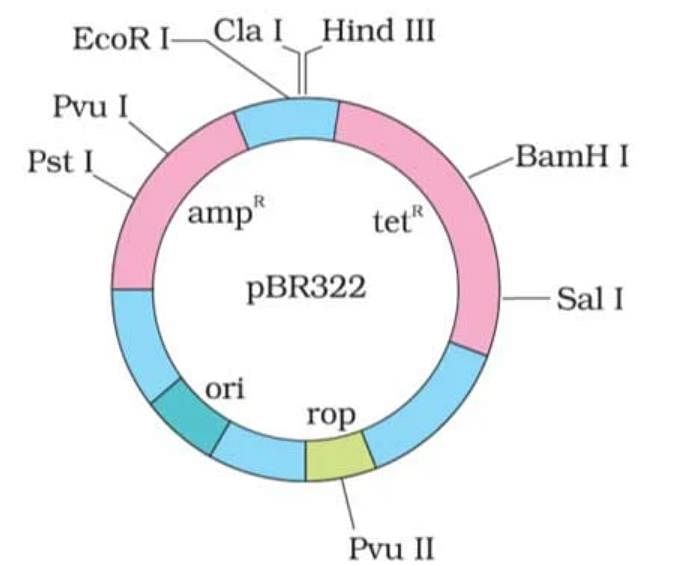Test: Tools of Recombinant DNA Technology - NEET MCQ
10 Questions MCQ Test Biology Class 12 - Test: Tools of Recombinant DNA Technology
For transformation, micro-particles coated with DNA to be bombarded with gene gun are made up of :
| 1 Crore+ students have signed up on EduRev. Have you? Download the App |
Two microbes found to be very useful in genetic engineering are
A and B in pBR322, shown in the diagram given below, respectively represent recognition sequences of:
What is the primary function of the origin of replication (ori) in a DNA vector?
Which of the following is NOT considered a useful selectable marker for E. coli?
Which of the following statements given above is/are correct regarding restriction endonucleases?
i. Hind II was the first restriction endonuclease discovered and cuts DNA at a specific sequence of six base pairs.
ii. The convention for naming these enzymes is the first 2 letters of the name comes from the genus and the second one letter come from the species of the prokaryotic cell from which they were isolated.
iii. Exonucleases and endonucleases are both types of restriction enzymes that function by cutting DNA at specific sites.
iv. Each restriction endonuclease can only recognize and cut palindromic sequences in the DNA.
Assertion (A): The use of alternative selectable markers in recombinant DNA technology simplifies the identification of recombinant colonies.
Reason (R): These markers allow for the differentiation of recombinants from non-recombinants based solely on color change in the presence of a chromogenic substrate.
|
86 videos|294 docs|184 tests
|














